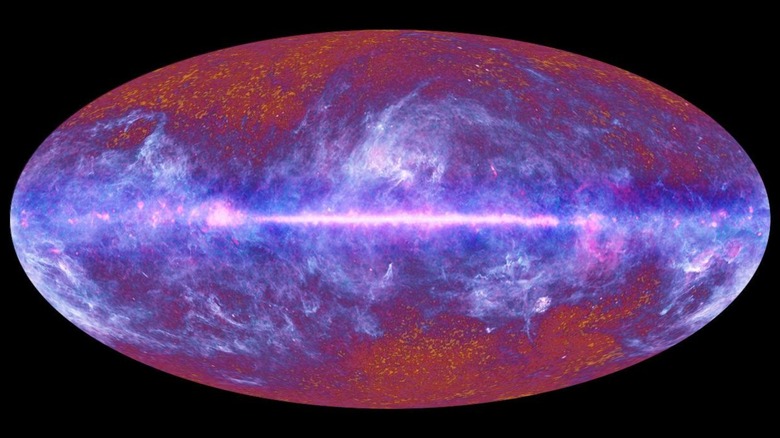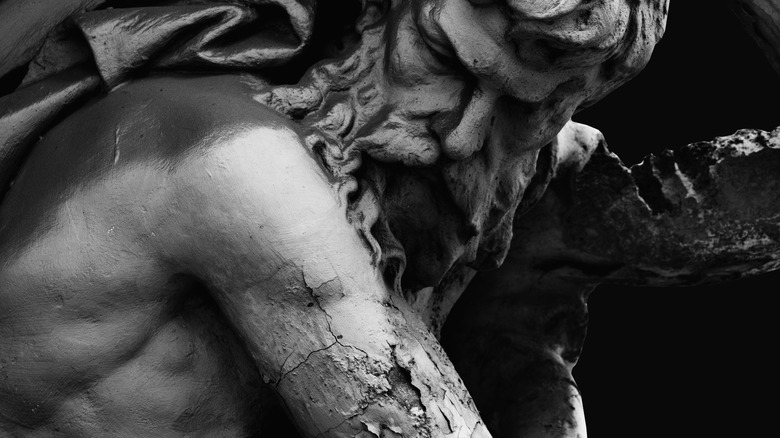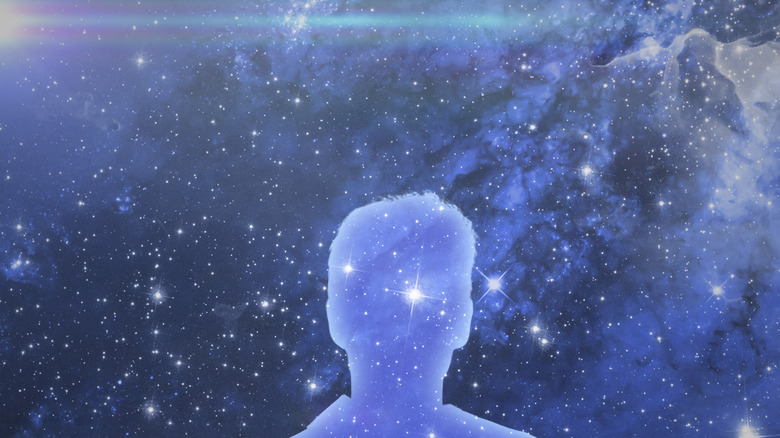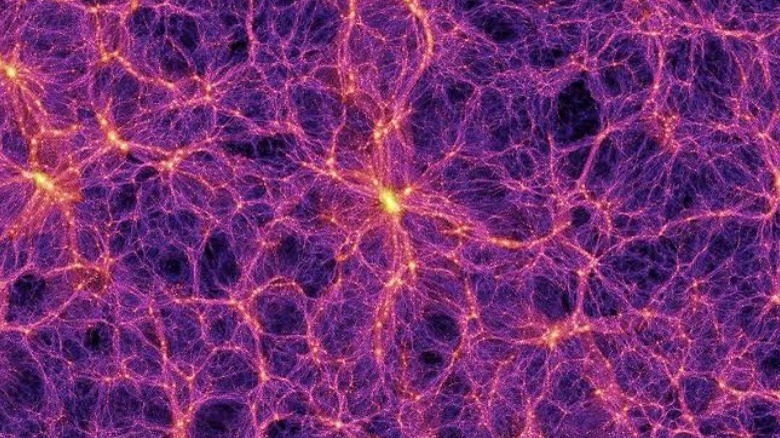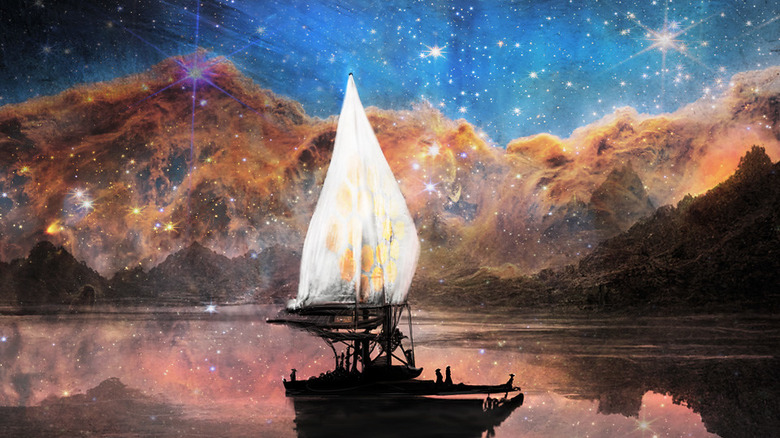Theories That Claim The Universe Is Conscious Have Persisted For Thousands Of Years
We're going to say it: treehuggers get a bad rap. What's so wrong with kindness, o' embittered ones? Ecologist Suzanne Simard on NPR describes trees as not only communicative creatures but social and cooperative creatures who share information from generation to generation. Saplings link to the network of roots beneath the surface and receive nutrients from older trees like a mammalian newborn does mother's milk. Trees even link in networks around an older, "mother" tree. Smithsonian Magazine describes the "wood-wide web" of roots sharing nutrients in the soil, and how those roots connect through fungal fibers to make a full, synthesized network that resembles a brain and its neurons. Trees are robustly alive, not just dormant and dumb.
Go back far enough, and ancient animists ascribe not just life, but soul, to every river, rock, and fragment of the natural world, as Ancient Origins describes. The Conversation explains how ethnic groups such as the Buryat in Siberia are reviving such beliefs as a way to foster respect for nature. Modern-day Buddhism, Hinduism, Sikhism, Heathenism, Shinto and more all retain strong elements of animism. Ultimately, animism implies that Earth is a single, giant lifeform, a notion called the Gaia Hypothesis, per Science Direct.
But life and consciousness are two different things, as Frontiers in Psychology defines. Humans are conscious, as far as we regard ourselves. But is it possible that our definitions are too limited? Is it possible that the entire cosmos is not just alive, but conscious?
Life vs. consciousness
This article concerns itself with millennia-old, ultimately unanswerable questions tackled by ancient philosophers like Zhuang Zhou and Aristotle, enlightenment philosophers like Descartes and Kant, New Age and Yogic traditions, all the way to modern simulation theory and neuroscience. Each has come to different conclusions about consciousness. But because everyone more or less agrees that consciousness necessitates life, we need to first define life.
An absolute materialist (matter is all that exists) or empiricist (all knowledge derives from the senses) will simply say: life is what we've seen it to be. Life involves cells and complex protein structures, the encoded transmission of genetic information, organisms that respirate, reproduce, etc., and all such criteria you might remember from elementary school and outlined on Biology Online. But to explore the idea of the universe itself being conscious, we've got to adopt a more holistic, systemic, and admittedly vague definition.
Consciousness is even trickier to define. But as Frontiers in Psychology says, consciousness is an emergent property rather than a characteristic of an object. An apple may be green, hard, tart, and so forth — those are characteristics; its deliciousness is an emergent property. Similarly, consciousness in humans arises from the interaction between play, communication, and tool use. Consciousness, in other words, is greater than the sum of its parts. Science and philosophy often look to the smallest things — the atom, the element, the waveform — to describe reality. Maybe, though, the truth lies in the largest, holistic, even universe-sized scale.
The hylozoists of Ancient Greece
Even amongst those inclined towards holism, it may come across as extreme to postulate that the entire universe is one, single, emergent consciousness. Some of the earliest folks to think in such terms, though, were seventh to sixth-century B.C.E. Greek hylozoist philosophers like Thales, Alaximander, and Heraclitus, as Hellenica World explains. While hylozoists didn't think that the universe was conscious in a self-aware way, they did adopt a kind of ultra-animistic belief, whereby everything everywhere is alive together. But rather than each individual thing having a discreet life — a tree, a mountain, a lion — each thing was a facet of a whole, unified, living cosmos. Such a belief was later defined as monism, the belief that the universe comprises an undivided union of matter and spirit, life and God, into an indivisible oneness.
While it might seem incompatible to talk about modern astronomy, neurology, and biological definitions of life and consciousness on one hand, and pre-modern Greeks with zero present-day scientific understanding on the other, the two are far more related than the reader might realize. Hylozoists and other Greek philosophers were early natural scientists who came to their conclusions based on a combination of observation, rationality, deduction, and so forth. In trying to understand the physical, natural world, they acted as precursors to the investigative rigor that defines modern geology, biology, chemistry, physics, etc. "Science," as a method of inquiry, didn't exist until 17th-century Enlightenment Europe, as Wondrium Daily explains.
A conscious, panpsychic universe
So how do we go from "The universe is alive" to "The universe is alive and conscious"? We already said that life is considered a precursor to consciousness — all consciousness is alive, but not all life is conscious. That is, unless our definition of consciousness is as restrictive as our definition of life, as articles like that on Quanta Magazine speculate.
Philosophy Now dives into the notion that the entire universe is conscious — known modernly as panpsychism — and connects it to the Greek hylozoists. Panpsychism doesn't say that individual electrons are circling the nucleus of an atom and thinking, "Man, this sucks." Rather, panpsychism takes cues from the subjectivity of reality, i.e., we can never fully know the inner experience of any other thing, even an electron.
So rather than envisioning consciousness as a dimmer on your living room lights that starts egotistically bright (humans), gets dimmer (your dog), even more dim (the plant in the corner), and then pop, conscious is gone, panpsychics suggest that the glow of consciousness — however we define that — remains present even in our most constituent, atomic parts. Instead of defining reality as bundles of dumb matter built from dumb, smaller matter, it might be a more accurate to look at the holistic, gestalt object — the universe — and work smaller. Sites like Aeon admit that panpsychism sounds "crazy" in light of particle physics alone, but makes sense when considering the subjectivity of reality.
Nodes in the cosmic web
But the universe is just empty space, you might say. How could it be "conscious"? Stars are orbited by rocky and gaseous planets and separated by light years full of nothing but the ambient hum of electromagnetism and gravity. Well, the same could be said of the neurological framework of the human brain, which looks shockingly similar to the distribution of stars and galaxies across the observable universe, aka the cosmic web. Nodes cluster together, strands connect nodes, and there's space in between. Science Alert shows a side-by-side comparison of the two and describes all the supposed emptiness of space (72% dark energy) as equivalent to the emptiness in the brain (77% water). Twelve-year-old Aine on The Conversation posits an interesting question at this point: "The universe looks like a giant brain. If it's the brain, where's the body?"
Structural similarities between the brain and the cosmos don't indicate that the cosmos is thinking, though. Rather, it's more that the form of a network may be the natural shape that systems of greater complexity take. A single person can only do so much, but two can do much more. Enough humans make a community, and communities attach by roads just like passageways in ant colonies, axons in the brain, or filaments in the cosmic web. And rather than neurons communicating using electricity and chemicals, stars have light and heat. In other words, the collective activity of the entire universe may constitute a form of consciousness.
Spinoza's pantheism: Everything is God
And so we come to the final facet of panpsychism, one which circles around to animism and lends itself well to the "consciousness is in the smallest atom" argument: pantheism. Pantheism is bound to raise some theological hackles. But even modern, monotheistic religions like Christianity have come to the same conclusion, per Christianity.com. Namely, that God is in everything. Put differently, everything is a facet of God. Or simply, everything is God. If consciousness exists in all material objects of all sizes (atoms, dogs, stars), and that material and spiritual are indivisible (monism), then simply swap "consciousness" for "God" and you've revealed the pantheism hidden within panpsychism.
This was the exact stance adopted by 17th-century Dutch philosopher Baruch Spinoza. Spinoza distilled his views on pantheism (and therefore panpsychism) into 15 propositions, which the Stanford Encyclopedia of Philosophy summarizes as, "God is the infinite, necessarily existing (that is, self-caused), unique substance of the universe. There is only one substance in the universe; it is God; and everything else that is, is in God."
If this is true, then we humans do occupy some strange point of self-reflective cosmic consciousness. If an atom doesn't think about itself, and neither does the entire universe (although who can say for sure?), then it falls on us — smallish but not too small nodes in the cosmic web — to do so. And if the past is any indicator, we'll likely continue to do so for quite some time.
